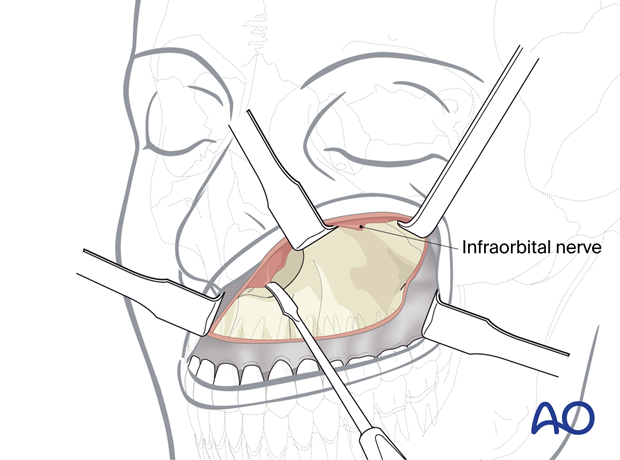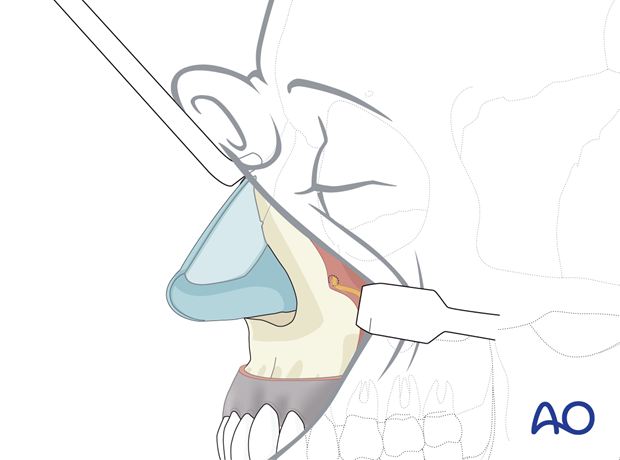Approaches to the maxilla
1. Overview
Maxillary fractures can be accessed via two possible approaches:
2. Maxillary vestibular approach
In the surgical treatment of facial trauma, the skeleton of the lower midface is commonly exposed using a transoral approach via the maxillary vestibule.
The vestibular incision will give access from the infraorbital rim superiorly to the piriform rim medially to the zygomaticotemporal suture laterally.
Read a detailed description of the maxillary vestibular approach.

Access area
The anterolateral surfaces of the lower midface skeleton can be exposed via a unilateral or bilateral maxillary vestibular approach:
- Entire anterior face of the maxilla
- Zygomaticomaxillary buttress
- Infraorbital rim
- Zygomatic body, anterocaudal part of zygomatic arch
- Piriform aperture
- Anterior nasal spine and caudal nasal septum
Neither the posterior wall of the maxilla or the pterygomaxillary fissure and fossa can be directly visualized.
The length of the vestibular incision and the extent of subperiosteal dissection vary according to the area of surgical interest and the extent of the intervention. In the case of a unilateral zygomaticomaxillary fracture, the incision is limited to one side.

3. Midface degloving approach
Midface degloving is an option rarely used in facial trauma. The horseshoe type bilateral maxillary vestibular incision is combined with a circumferential incision (infra-cartilaginous, transfixion, and nasal floor) inside both nostrils. This enables lifting the soft-tissue envelope over the nasal dorsum to the radix.
Read a detailed description of the midface degloving approach.

Access area
The access area extends cranially above the nasal dorsum to the level of the ethmoid, the entire zygomatic body, and lower third of the lateral orbital rim.

4. Links to detailed descriptions
Click the following links to read a detailed description of the approaches to the maxilla:













